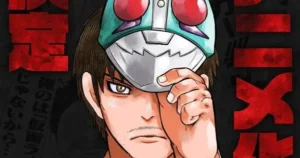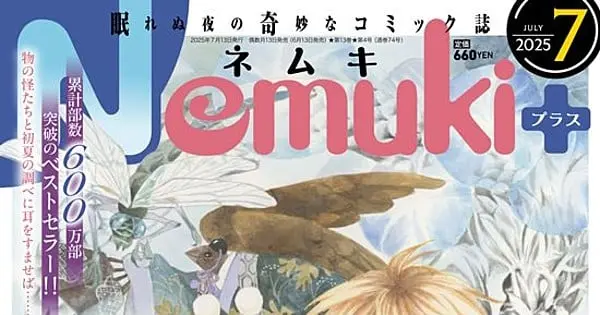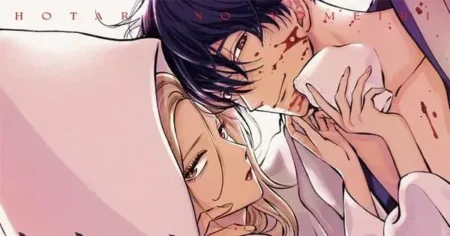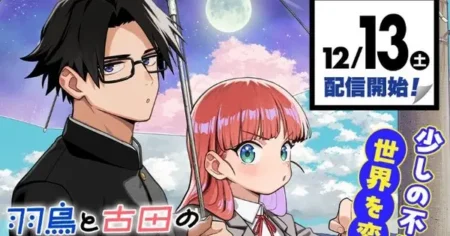Masaaki Nakayama, the master of unsettling horror manga, is launching a brand new series! Fans of his unique brand of creeping terror, known for works like PTSD Radio and Seeds of Anxiety (Fuan no Tane), can mark their calendars. On August 12th, Nakayama, in collaboration with Ai Saotome, will release Matsudai no Honoka (The Eternal Honoka), a new action horror manga in the July issue of Asahi Shimbun’s Nemuki+ magazine.
What to Expect from The Eternal Honoka
Matsudai no Honoka centers on a girl named Honoka, who appears to be a protector of the weak. However, she harbors a secret, suggesting a darker, more complex narrative than a simple hero story. Given Nakayama’s previous works, readers can anticipate a blend of action and psychological horror, playing with themes of urban legends, the supernatural, and the unsettling aspects of everyday life.
Nakayama’s style often features short, startling vignettes that build into a larger, more disturbing picture. It’s likely that The Eternal Honoka will follow a similar pattern, drawing readers in with seemingly simple scenarios that quickly devolve into terrifying situations.
Masaaki Nakayama: A Master of Modern Horror Manga
Masaaki Nakayama, born on December 16, 1966, is a mangaka from Sapporo, Hokkaido, Japan, who debuted in 1990. He is known for his distinctive approach to the horror genre. Unlike gore-filled horror, Nakayama specializes in subtle, psychological terror, using unsettling imagery and narratives to create a lingering sense of dread. His work often explores the hidden fears and anxieties of modern society, tapping into the unease that lurks beneath the surface of everyday life.
Key Characteristics of Nakayama’s Work:
- Short, impactful stories: Nakayama is renowned for his short-form horror, delivering scares in just a few pages.
- Psychological Horror: Instead of relying on gore, Nakayama creates a lingering sense of dread through unsettling imagery and narratives.
- Urban Legends and Superstition: His stories often incorporate Japanese urban legends and superstitions, adding a cultural layer to the horror.
- Unique Art Style: Nakayama’s art style is detailed and distinctive, enhancing the unsettling atmosphere of his stories.
Notable Works:
- Fuan no Tane (Seeds of Anxiety): This series of short horror stories established Nakayama’s reputation. It was adapted into a live-action film in 2013. The manga presents a series of brief encounters with the paranormal and bizarre, often leaving the reader with more questions than answers. The unsettling nature of the stories comes from their ambiguity and the way they tap into primal fears.
- PTSD Radio: PTSD Radio presents a series of interconnected horror stories centered around the being Ogushi, who is linked to human hair. This series further solidified Nakayama’s position as a unique voice in horror manga, with its unsettling imagery and exploration of psychological trauma. The omnibus editions of PTSD Radio have become increasingly popular, introducing Nakayama’s work to a broader audience. The stories are woven together with recurring characters and themes, creating a sense of interconnectedness that adds to the overall feeling of unease.
- Kakazu no 753:
- Black Jack – Aoki Mirai:
- Kouishou Rajio:
- Flagman:
- Fuan no Tane +:
- Meisei Toshi:
- Naku Samurai:
Nakayama’s Impact and Influence
Nakayama’s work has earned him a dedicated following, with fans appreciating his ability to create a lasting sense of unease without relying on cheap scares. He has been compared to other masters of horror manga, such as Junji Ito, but Nakayama’s focus on subtle, psychological horror sets him apart. His influence can be seen in other horror manga and visual media, as creators draw inspiration from his unique approach to the genre.
Diving Deeper into Nakayama’s Key Works
To truly understand what The Eternal Honoka might bring, it’s worth examining some of Nakayama’s most acclaimed creations in more detail:
Fuan no Tane (Seeds of Anxiety)
- Structure: Fuan no Tane is structured as a series of short, often unrelated, horror stories. These stories typically span only a few pages, delivering quick, unsettling glimpses into a world just slightly askew from our own.
- Themes: The series frequently touches on themes of urban legends, unexplained phenomena, and the lurking dread that can be found in the mundane. It excels at creating a sense of unease and paranoia.
- Art Style: Nakayama’s art in Fuan no Tane is characterized by its stark black and white imagery, with a focus on detailed backgrounds and unsettling character designs. The monsters and apparitions are often bizarre and grotesque, adding to the overall feeling of dread.
- Why it Resonates: The series’ strength lies in its ability to tap into primal fears and anxieties. The short, sharp shocks of horror leave a lasting impression, making the reader question the safety and stability of their own reality.
PTSD Radio
- Structure: PTSD Radio shares a similar structure to Fuan no Tane, with short, interconnected stories. However, PTSD Radio features a more cohesive narrative, with recurring characters and an overarching storyline.
- Themes: The series delves into themes of psychological trauma, urban decay, and the lingering impact of the past on the present. The central entity, Ogushi, represents the manifestation of these traumas.
- Art Style: The art style in PTSD Radio is even more detailed and unsettling than in Fuan no Tane. Nakayama’s use of shadows and grotesque imagery is particularly effective in creating a sense of dread and unease.
- Why it Resonates: PTSD Radio resonates with readers because it explores the darker aspects of the human psyche. The series’ exploration of trauma and its impact on individuals and society is both disturbing and thought-provoking.
What This Means for The Eternal Honoka
Given Nakayama’s track record, The Eternal Honoka is likely to be a chilling and thought-provoking addition to the horror manga landscape. Here’s what we can anticipate:
- A Protagonist with a Dark Side: Honoka’s secret suggests a morally complex character, potentially blurring the lines between hero and monster.
- Action-Packed Horror: The combination of action and horror promises a thrilling and suspenseful narrative.
- Exploration of Social Anxieties: Nakayama’s work often reflects contemporary social anxieties, and The Eternal Honoka may touch on themes relevant to modern Japanese society.
- Unsettling Visuals: Expect Nakayama’s signature art style, with detailed backgrounds, grotesque character designs, and a masterful use of shadows to create a sense of unease.
Where to Find Masaaki Nakayama’s Works
For English-speaking fans eager to delve into Nakayama’s terrifying world, here’s how to access his works:
- PTSD Radio: Kodansha USA Publishing has released PTSD Radio in English, both digitally and in print as three omnibus volumes. These collections are readily available from major online retailers like Amazon, Barnes & Noble, and Rightstufanime.
- Fuan no Tane (Seeds of Anxiety): While not officially available in English, fan translations of Fuan no Tane can be found online. Keep an eye out for potential future official releases, given the growing popularity of Nakayama’s work.
Get Ready for More Nakayama Horror!
With The Eternal Honoka, Masaaki Nakayama is poised to deliver another dose of his unique brand of horror. Fans of unsettling, psychological manga should prepare themselves for a thrilling and disturbing ride when the manga launches on August 12th. Be sure to check out Nemuki+ magazine for the first installment of this highly anticipated series!









